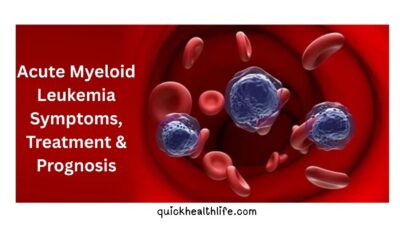Acute lymphoblastic leukaemia (ALL) is a rare but aggressive type of cancer that affects the blood and bone marrow. It occurs when immature white blood cells, called lymphoblasts, multiply uncontrollably. This disrupts the production of normal blood cells and weakens the immune system. Understanding its causes, symptoms, and treatment options is vital for timely intervention.
Table of Contents
What is Acute Lymphoblastic Leukaemia?
ALL develops when abnormal stem cells in the bone marrow fail to mature properly. These cells replace healthy red blood cells, white blood cells, and platelets. Over time, this imbalance leads to anemia, bleeding disorders, and frequent infections.
The disease can affect both children and adults, though the outcomes vary. Early detection improves the chance of effective treatment.
Acute Lymphoblastic Leukaemia Symptoms
Recognizing early warning signs is crucial. Common acute lymphoblastic leukemia symptoms include:
- Persistent fatigue and weakness
- Unexplained weight loss
- Fever and night sweats
- Easy bruising or frequent nosebleeds
- Swollen lymph nodes, liver, or spleen
- Pale skin and shortness of breath
- Frequent infections
These signs often mimic other illnesses, making acute lymphoblastic leukemia diagnosis challenging without proper medical testing.
Causes and Risk Factors
The exact cause remains unknown, but several risk factors play a role:
- Genetic abnormalities such as Down syndrome
- Family history of blood cancers
- Previous chemotherapy or radiation exposure
- Environmental factors including chemical exposure
- Weakened immune system
Children are more prone to ALL, though adults often face more aggressive forms.
Acute Lymphoblastic Leukaemia in Children
Most cases occur in children under the age of 15. The acute lymphoblastic leukemia child survival rate is relatively high, especially with modern therapies. Early treatment offers children an excellent chance of remission.
Acute Lymphoblastic Leukaemia in Adults
Adults usually experience more complex cases of ALL. The prognosis depends on age, overall health, and response to therapy. Acute lymphoblastic leukemia in adults generally has lower survival outcomes than in children, but treatment advancements continue to improve results.

Acute Lymphoblastic Leukemia vs Acute Lymphocytic Leukemia
Many people confuse the two terms. In reality, acute lymphoblastic leukemia vs acute lymphocytic leukemia refers to the same condition. Both describe cancer caused by immature lymphoid cells in the bone marrow.
Diagnosis of Acute Lymphoblastic Leukaemia
Accurate acute lymphoblastic leukemia diagnosis involves several tests, including:
- Complete blood count (CBC)
- Bone marrow aspiration and biopsy
- Flow cytometry and immunophenotyping
- Genetic and molecular testing
These examinations help classify the type of ALL and guide treatment decisions.
Acute Lymphoblastic Leukaemia Treatment
Treatment for ALL is multi-staged and often lasts several years. The main approaches include:
Chemotherapy
The primary method for killing abnormal lymphoblasts. It is given in cycles to prevent relapse
Targeted Therapy
Drugs that specifically attack cancer-causing genetic mutations.
Immunotherapy
Boosts the body’s immune response to fight abnormal cells.
Radiation Therapy
Used in certain cases, especially if cancer has spread to the brain or spinal cord.
Stem Cell Transplant
Recommended for high-risk patients or those with relapse.
Acute Lymphoblastic Leukemia Survival Rate
The acute lymphoblastic leukemia survival rate depends on age, health, and treatment response. Children often have survival rates of 85% or higher, while adults show lower rates. Advances in research are improving outcomes for all patients.
Living with Acute Lymphoblastic Leukaemia
Survivors often face long-term effects such as fatigue, fertility challenges, and secondary cancers. Regular follow-up care ensures monitoring and management of side effects. Support from family and healthcare teams is crucial during recovery.
Conclusion
Acute lymphoblastic leukaemia remains a serious condition, but early diagnosis and advanced therapies improve chances of survival. Whether in children or adults, awareness of symptoms and timely treatment is key. With continuous medical progress, hope for better recovery and long-term survival continues to grow.



